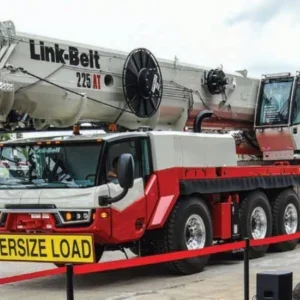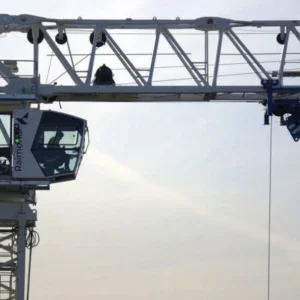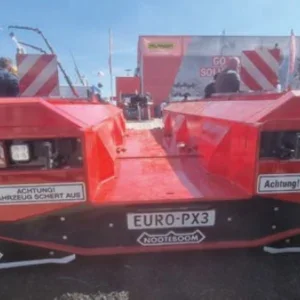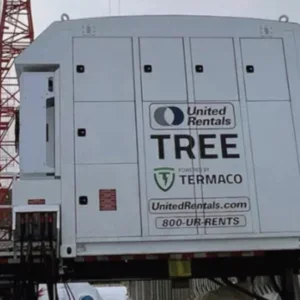Propelled by Australia’s long infrastructure and resource boom, demand for cranes, mining and earthmoving machinery had all reached record levels last summer, taking the Australian mobile crane market into the world’s top ten. The boom had been fuelled primarily by the high price of Australia’s massive mineral resources driven in turn by enormous demand for these minerals from other countries in the region, especially China and Japan. As a result of lack of investment by earlier government administrations during the 1990s, the nation’s infrastructure was in serious need of major improvement.
Back in 2008, many analysts were promising sustained demand stretching well into the future, and arguing that even a collapse in mineral prices would not affect demand from ongoing projects for at least two years. But, timing is everything and while the analysts weren’t completely wrong in their prognosis, we are now only one year, not two years, on from then and the word boom is no longer quite appropriate.
In general, the Australian economy and crane market are in significantly better shape than most others around the world. The economy contracted by 0.5% in fourth quarter 2008 but turned marginally positive in the first quarter of this year and while mineral resource prices suffered substantial declines there remained fairly widespread optimism that Chinese demand for Australia’s minerals would cushion the downturn. The Rudd Government responded quite quickly to the economic reversal with a stimulus package valued at AUD52bn (USD33bn) and in December announced a temporary investment allowance that in February developed into The Small Business and General Business Tax Break. This investment tax credit enabled buyers of new tangible, depreciating assets to claim a 30% bonus deduction ordered by 30 June, 2009 and delivered by 31 December, 2010.
As recently as late last year, prospects for sales of new imported cranes appeared almost non-existent, as the precipitous slide in the value of the Australian dollar threatened to make new sales totally unviable for the foreseeable future. From July to November the value of the Australian dollar slid from almost parity with the US dollar to AUD0.60 to 0.65 pushing up import prices by as much as 50%. Thankfully since March, confidence in the Australian economy has helped the Australian dollar stage a strong recovery to around 0.80 to the US dollar.
In 2008 demand peaked at an all-time record level. In total year-on-year demand for new mobile telescopic cranes increased almost 30% to 668 units while demand for new (full-size) lattice and telescopic boom crawler cranes increased almost 40% to 75 units. Remarkably, in terms of pure unit numbers, this made this nation of some 22 million people the world’s ninth largest mobile crane market after China, India, Russia, USA, Japan, Saudi Arabia, the UAE and Germany. Chortsey Barr Associates estimates that overall 2009 new mobile crane demand looks likely to be down by around 30%.
The dominant presence in the market, remains, of course, Terex Franna. The Eagle farm, Queensland-based division of Terex Cranes expanded production by 20% in 2007 and again in 2008 reaching an all-time record of about 360 units – almost all of them sold domestically. Even so, delivery times lengthened to close-on two years by last summer. Predictably, as in other more global market segments, frustrated customers desperate for cranes showed themselves willing to try new unproven alternative suppliers or dredge-up failed ones. Even in today’s market, while Franna’s order books have been ‘adjusted’ with the cancellation of some orders that might from the outset have lacked 100% veracity, and with 2009 plans shaved by about 20%, demand has held remarkably firm for the mainstay AT-20 and while demand for the 15-tonner has declined, orders have increased healthily for the larger 25t Mac-25. As a consequence Franna is still quoting 16-month lead times.
Terex-Franna’s acting general manager Danny Black felt that the government’s investment tax credit had been a positive, more for the larger cranes than for the Frannas. “Things were pretty slow at the start of the year especially for the imports but the weakening of the Euro against the Australian dollar has helped a lot. The larger capacity crane market is still quite good. So far this year we’ve delivered a CC 2800-1 to Universal; Metcalf has an AC 350 on order and Lindores recently took delivery of its second AC 350 and have an AC 500 with full fly coming later in the year. Sales of Franna have held up very well considering, on a year-to-date basis we’re only down 6% on last year.”
Of course, such long delivery times by the market leader presents an attractive opportunity to would-be competitors – both ‘new’ and ‘resuscitated’. Of the limited field of domestic competitors the 20t ‘Humma’ 20-25 made in Western Australia by Construct Engineering, falls into the resuscitated category and is a relatively small player with monthly production of 1-2 units. Though long-deceased, another iconic Australian crane brand, Linmac, has also been resuscitated by Zoomlion of China via its Australian distributor Dellgale. Prototypes of the Zoomlion AWD 20, based on the Forward Engineering-Linmac FE420 were imported in mid-2008 and production units are being delivered.
This particular road from China had been pioneered by XCMG distributor, Australian Crane & Machinery of Campbellfield, Victoria with its ‘Franna-esque’ 20t capacity articulated crane nicknamed the ‘Panda’. Initially this proved a somewhat rocky road as the prototype Panda was roundly criticised when it first emerged from the bamboo in 2007. Ben Potter of Australian Crane & Machinery says, “Demand for the 25t to 50t tele truck cranes amongst the steel erectors and general contractors is still pretty much dead but we’re hopeful for the new XCMG 60-tonner we’ll be showing alongside the ARC 20 articulated crane at the Canberra conference.
“The quality has got a lot better during the past year. The mining sector is still taking cranes. In two weeks time we’ll deliver Daniel Smith’s second 550t Kobelco SL 6000 up to the Northwest shelf and we’ve also got the first 400t SL 4500 going to Walter Wright in McKay. Wrights are the biggest owners of Kobelco cranes in Australia with 18 of their 35 250-tonners on the same project. All told we’ve sold close-on 75 Kobelco 250-tonners over the past three and a half years – it’s a fabulous product.”
Shane Rouhan of Zoomlion importer Dellgale is particularly up-beat. “Up until four weeks ago it wasn’t good at all. But since then we’ve had more enquiries than in any month since the crisis began and taken orders for 3 or 4 AWDs, three 25t and one 50t truck crane. I just spent a month at Zoomlion’s new factory in China and we’re just releasing an up-dated version of the AWD with fully-moulded dash, proximity sensors all round and winch cameras. Last year we brought in the first three units and so far this year we’ve sold 17. Tower crane demand is dead but we’re working on enquiries for Zoomlion’s windfarm crawler”.
Meanwhile, for the past 12 months or so, India’s Action Construction Equipment (ACE) has enjoyed limited success in selling its line of tractor-cranes of 9t-15t capacity, mainly to the concrete industry, via its Brisbane-based distributor Australian Mining Logistics.
Mergers & acquisitions
Times of market contraction often lead to increased merger and acquisition activity as the fiscally strong gobble up those less fortunate. And so has been the case in recent months in the Australian crane rental industry.
Early July saw the acquisition of Hercules Crane Hire by Mammoet. Since its modest beginnings in Leonora, WA in 1995, Greg Robert’s company had expanded to five branches in Western Australia and last year purchased 10 new cranes – including 300t and 400t Liebherr ATs to take its fleet to over 30 mobiles including some Frannas, 15 very young Liebherr ATs and a 100t LTR 1100 tele crawler. However, such rapid expansion is often fraught with danger and the company found itself in serious financial difficulties after deep losses on a recent project. Mammoet’s acquisition is designed to serve its anticipated expanded crane needs in WA if, as expected, it is successful in winning the crane work involved in Chevron’s AUD50bn (USD40bn) Gorgon LNG project. This will be Australia’s largest ever resources project and is part of AUD220bn (USD176bn) of gas and oil projects slated for potential development in the next few years and is expected to be awarded late August to boost the Rudd Government’s economic stimulus measures.
A couple of months earlier D&G Hoists & Cranes acquired Verticon’s crane and hoist division to create certainly the largest tower crane rental company with a fleet of some 150 cranes. The deal was long in negotiation as bankers wouldn’t come to the party until, in the end, the two companies found a way to get the deal done by bypassing the banks. D&G managing director Gino DeCesare said, “It’s a great fit. We contributed 76 cranes and our market strength concentrated in Western Australia and Verticon had 75 cranes concentrated in Victoria, New South Wales and Queensland. We need to trim some of Verticon’s older machines and eventually focus on two or three brands with Potain dominant. We’re now an AUD90m (USD70m) company and have already re-branded Verticon as D&G Verticon. Market conditions are okay, there’s a shortage of housing in Victoria and New South Wales and many competitor’s cranes are older than our fleet which gives us an edge. Demand is good in Victoria – we’ve recently placed three Potains in Melbourne and sold two more. It’s strengthening in NSW and Queensland and WA will follow”.
Meanwhile, the future of the largest Australian crane rental company, Boom Logistics has been the subject of constant speculation. In May, Boom reported a severe contraction in its business and wouldn’t achieve its original 2009 plan.
While 2009’s first quarter crane rental results improved on the same eriod in 2008, its James Equipment subsidiary had been severely hit by changes in Yen and Euro exchange rates for its Tadano and Tadano Faun franchises. Due to market downturn and the exchange rate issues, James’ crane and equipment inventory had increased by AUD11.1m from AUD26.5m in December to AUD37.6m at the end of March.
On July 1, Boom shares slipped into suspension after requesting a trading halt. On July 7, Boom confirmed that it had been “undertaking confidential market soundings in respect of a proposed equity raising to strengthen its balance sheet and reposition the company for ongoing business development.”
During the course of these soundings Boom received an unsolicited merger proposal from the Harbrew Group that, through its associated entities including McAleese Investments Pty, is the largest shareholder in Boom with a 12.2% stake. Boom was in the midst of raising AUD80m from Deutsche Bank when Harbrew informed Boom that they didn’t want the new financing to proceed. In addition to McAleese Transport which is a large crane owner in its own right, Harbrew owns Kobelco and XCMG distributor Australian Crane & Machinery and National Cranes. Apparently amongst McAleese’s most-prized targets is the James Equipment business and its Tadano crane franchise.






